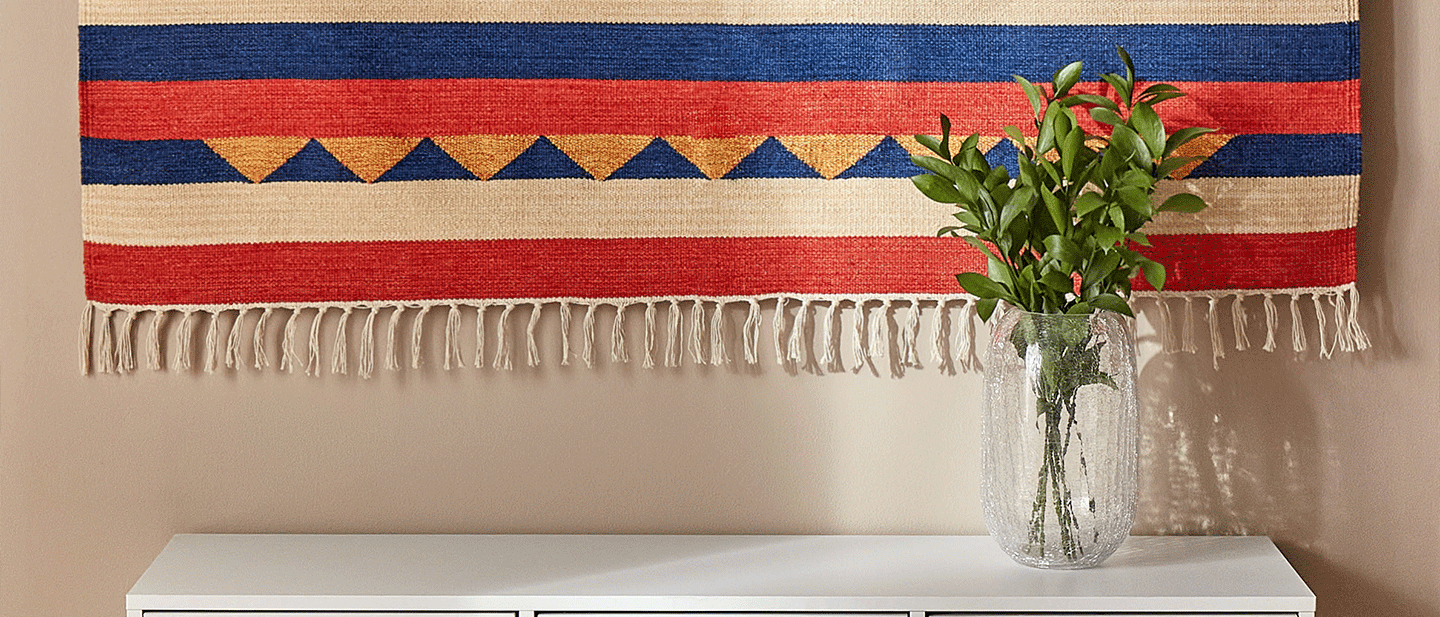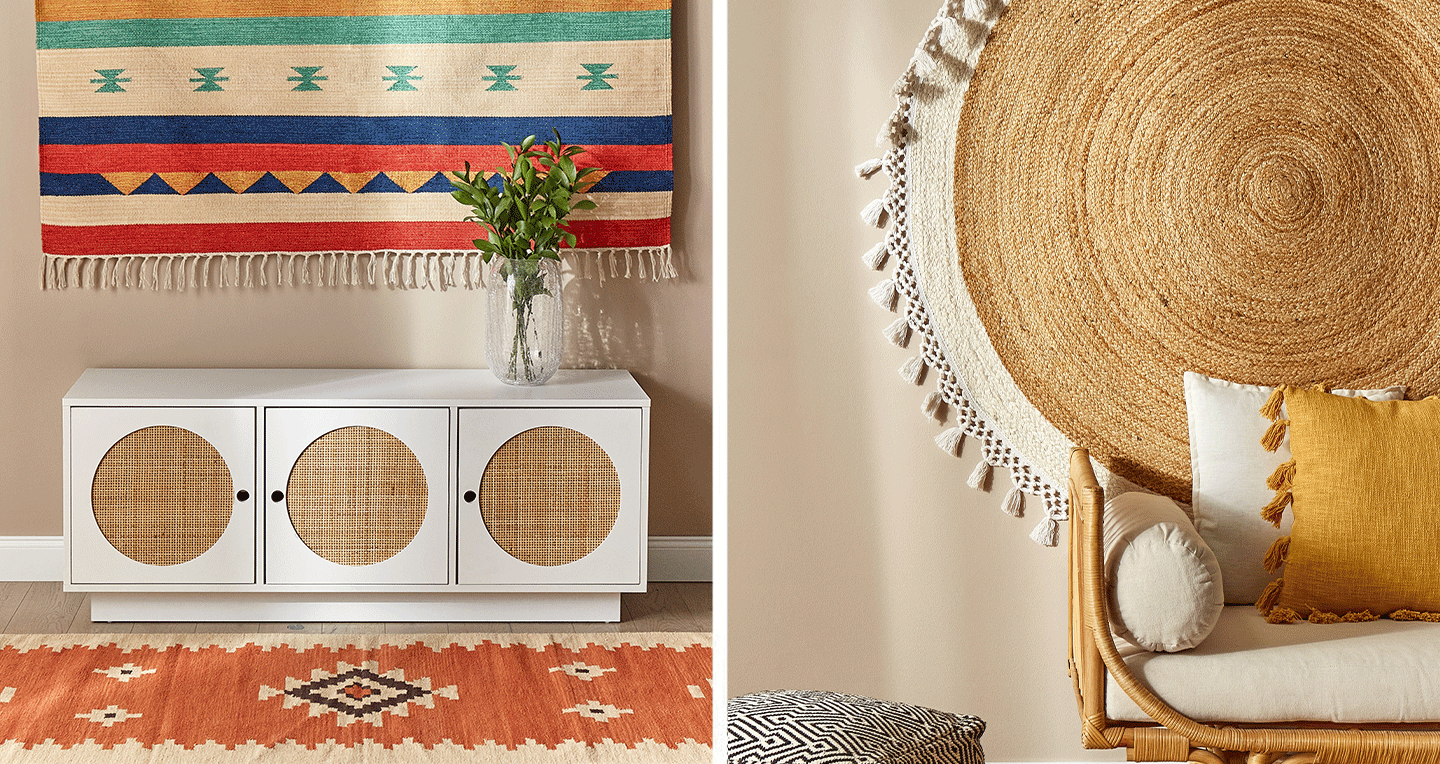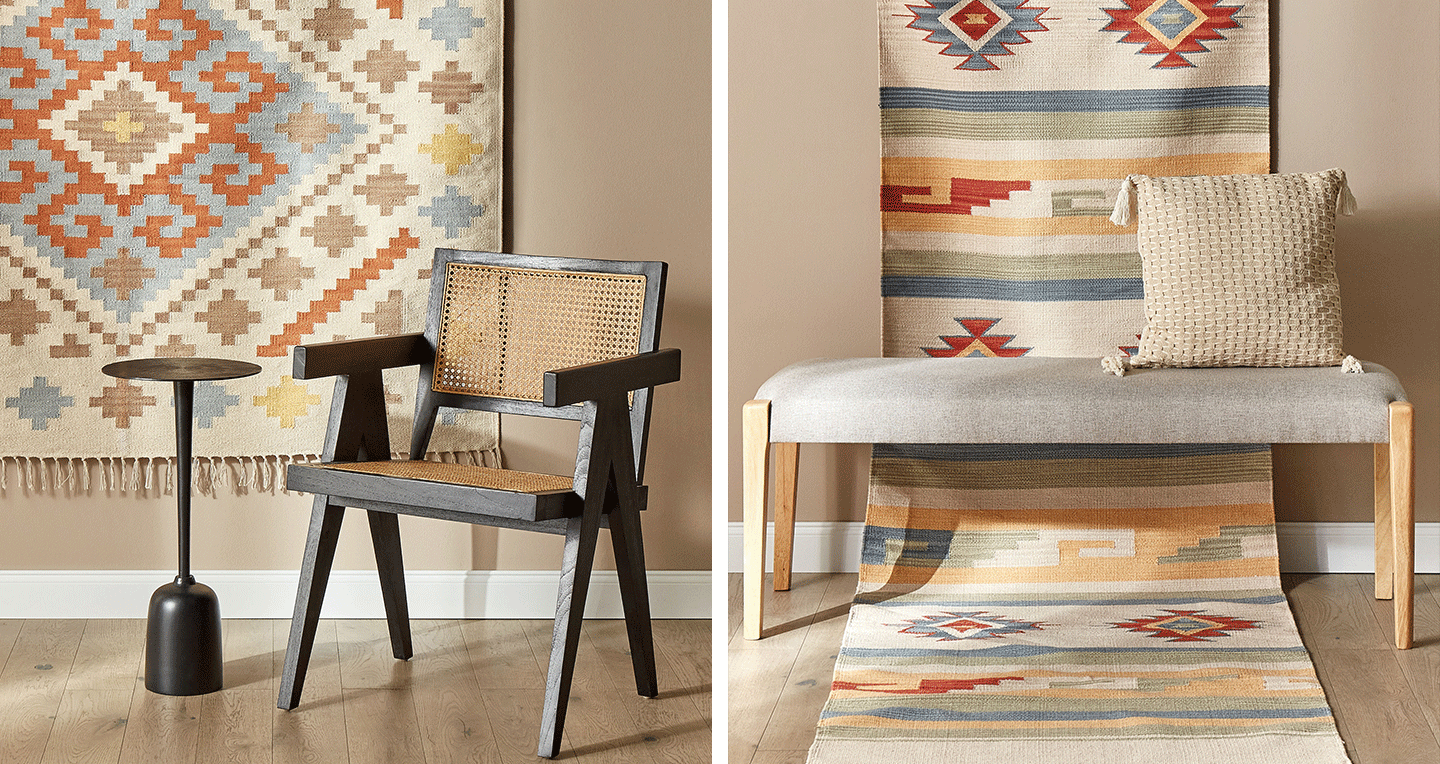Guide for Hanging Rugs: The New Way to Beautify Your Walls

Hanging rugs on the wall is a trend that dates back to ancient Persian times, and since then, it has come in and out of fashion many times. Although it presumably originates from there, hanging rugs on walls is a practice found in many cultures, including European ones. Which type of rug you should choose, how to prepare your walls for it, and the best ways to hang it – all this and more will be explained in this guide!
What Rug You Should Pick?
Let’s start with the basics - which rug is the best option for hanging on the wall? Of course, it mainly depends on you - you should pick a rug that fits your interior decor style and matches other accessories and furniture. The truth is, every rug can look good - at the end of the day, they're often called pieces of art. There are some things you should keep in mind, though:
- It’s recommended to hang a Persian or oriental-like rug. These rugs are highly decorative, featuring colourful, unique motifs and patterns. Additionally, these rugs are often hand-made, making them one-of-a-kind and enhancing their artistic appeal.
- When choosing a rug with tassels, consider how they will drape. If you opt for a rug with tassels, it might be better to hang it horizontally rather than vertically. This way, the tassels will be on the sides and won’t hang down over the rug, potentially obscuring its pattern.
- Match the rug to the wall’s size. If you plan to hang a rug in a hallway or a smaller bedroom, we recommend opting for a smaller size. This ensures the rug doesn’t dominate the wall space and prevents it from making the room appear smaller. Conversely, for spaces like the living room or other larger areas, a larger rug might be more fitting.
- Avoid shaggy rugs for hanging. Their textures might be challenging to maintain over time. They are also typically heavier, making their hanging process more laborious and necessitating additional accessories. If you're looking to hang a rug, it's advisable to choose a flat one made of wool, cotton, or polyester. Not only are these rugs lighter, but they are also much easier to clean and maintain.

Rugs above: MARGARA GAVAR MARTS
What You’ll Need to Hang a Rug?
The next step, nearly as crucial as choosing a rug, is determining the best method to hang it. There are various options to consider, but your choice should align with the type of rug you select. Why? Because some methods are more apt for smaller rugs, while others are better suited for larger ones, especially those hung in living areas.
So what are these methods?
- Rug Hangers - arguably the most popular option and one that's fairly straightforward to use. It works well with various rug sizes but is especially recommended for larger ones. The hanger typically consists of a bar equipped with (at least) two clamps that attach to the rug.
- Rug Sleeve - this method also involves a rod fixed to the wall. However, instead of using clamps, the rod is inserted into a sleeve. How is this done? If you opt to hang your rug this way, you should choose one with a pre-attached sleeve at its back or have a professional add one for you. Afterward, simply insert the rod and hang the rug!
- Velcro or Adhesive Strips - this technique is best for smaller rugs, as Velcro and adhesive strips might not sustain larger weights. Be aware that attaching these strips to the back of your rug could damage it, especially if it were to fall.
- Frame - consider creating a shadow box to house and display your rug. This method is typically more suitable for smaller rugs. It's a swift and stylish way to showcase your rug, giving it an art-like appearance. However, the frame will be visible, so it provides a different aesthetic compared to other hanging methods.
- Strings and Ropes - hanging the rug from the ceiling using slender ropes allows you to adjust its height and create a slight gap between the rug and the wall, creating a captivating visual effect.
- Quilt Hangers - typically crafted from solid wood, these hangers are ideal for smaller rugs. They can enhance the overall appearance of the piece and introduce a natural ambiance to the room, making them an excellent choice for displaying smaller rugs.

Rugs above: ATAN APARAN
Why Even Hang a Rug?
There are many reasons why one might choose to hang a rug. Firstly, it’s a refreshing alternative to traditional posters, wall frames, and art pieces. While these can be attractive, a wall-hung rug is sure to catch the eye of every visitor to your home.
However, rugs on walls aren’t merely decorative. They also have functional benefits that enhance the room. Opting for a slightly thicker rug can offer insulation to the room - acting as a barrier against cold and heat. This can help maintain a comfortable room temperature and boost energy efficiency.
In addition, a rug hung on a wall is excellent for sound absorption. Rooms with hardwood floors can often produce echoes, with sound reflecting off the floor. A wall rug in such an environment can significantly reduce this echoing effect.
Lastly, displaying a rug on the wall facilitates its preservation. Without the wear and tear of foot traffic, such a rug demands far less maintenance. This makes wall-hanging particularly suitable for antique rugs, which are historical artefacts. But rest assured, you don’t need a rug dating back to 500 B.C. to appreciate the aesthetic and functional benefits of this display method.
Extra Tips for Creating Unique Space with Wall Hanging Rugs
Looking for more inspiration on how to enhance your space with a wall-hung rug? Here are some ideas to consider:
- Ensure the room is well lit: Proper natural lighting can make the rug’s colours appear more vibrant and vivid. However, excessive sunlight can cause the rug to fade. Consider turning the rug periodically to preserve its colour and prevent uneven discolouration.
- Create an eclectic interior with multiple smaller rugs grouped together: Mix and match different colours and designs to craft a unique space that reflects your style.
- Experiment with layering rugs: Hang a larger rug close to the wall and overlay it with smaller rugs in contrasting colours or patterns. This layering technique can result in a distinctive display that captures attention.
- Complement with other home accessories: Enhance your space further with abstract wall decor or colourful vases positioned beneath your hanging rug.
Go From Floor to Wall
You're now well-versed in the art of hanging rugs on walls. With this guide, you're equipped to rejuvenate your living space with distinctive ideas. Try hanging just one rug, and you'll see how captivating the transformation can be!
Unsure where to begin your quest for the ideal wall rug? We recommend exploring our kilim and gabbeh collections. They're an excellent starting point!




